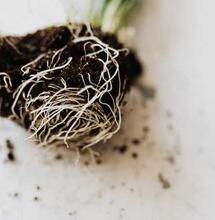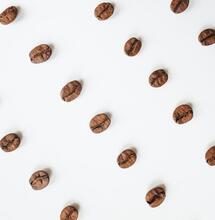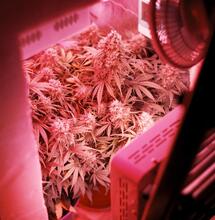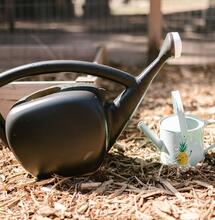Micronutrients- Copper

Copper is needed in tiny quantities to create chlorophyll. It also assists in plant respiration and the metabolism of carbohydrates and proteins. Copper also enhances flavour and colour in vegetables and flowers. Copper is actually what gives onions their yellow colour.
Naturally, a plant receives all the copper it needs from the soluble salts in the soil. In an indoor growing environment, a plant will receive copper in the form of copper sulfate Cu2+.
Copper deficiencies or toxicities are rare but can have seriously damaging results if you encounter them. Symptoms of a deficiency start typically in the younger leaves with cupping and yellowing of either the whole leaf or between the leaf's veins. Leaf burn may follow, and the new growth may be noticeably smaller, including leaves and stem length. Leaves will lose their sheen, and as symptoms progress, the colour of flowers may appear pale or faded.
The most common cause of a copper deficiency is a high pH in the medium. Like most micronutrients, copper is more available to the plant when the medium's pH is lower. An excess of other macro and micronutrients can also make the copper less available for the plant to take up. To solve a copper deficiency, check your plant's pH. If it is too low, try using a complete micro nutrient fertiliser which won't overdose the plant, which is easily done when the difference between too much or too little copper is minute. If you use a copper supplement, then make sure to add it through watering. A foliar spray will burn the leaves.
If you are experiencing copper toxicity, you would see restricted root growth and tip burn. This will result in excess lateral root growth. Copper toxicity can cause other micronutrient deficiencies as it will compete with iron, zinc or molybdenum for uptake by the plant. Copper toxicity will reduce branching if left to take hold, and the plant will begin to die off. To combat copper toxicity, first, test your medium's pH as copper is more available to the plant when the pH is low.
If necessary, increase it within the ideal boundaries (5.5-6.5). Make sure you apply any fertiliser at the recommended rate. Be careful if using any single element copper supplement such as copper sulfate. Even a tiny bit too much can cause toxicity. If your medium's pH is ok and you are not overdosing your plant. try testing your waterfor copper levels. Testing your water is helpful to check what levels of all elements are present and could help you identify any other potential problems.



.png)





